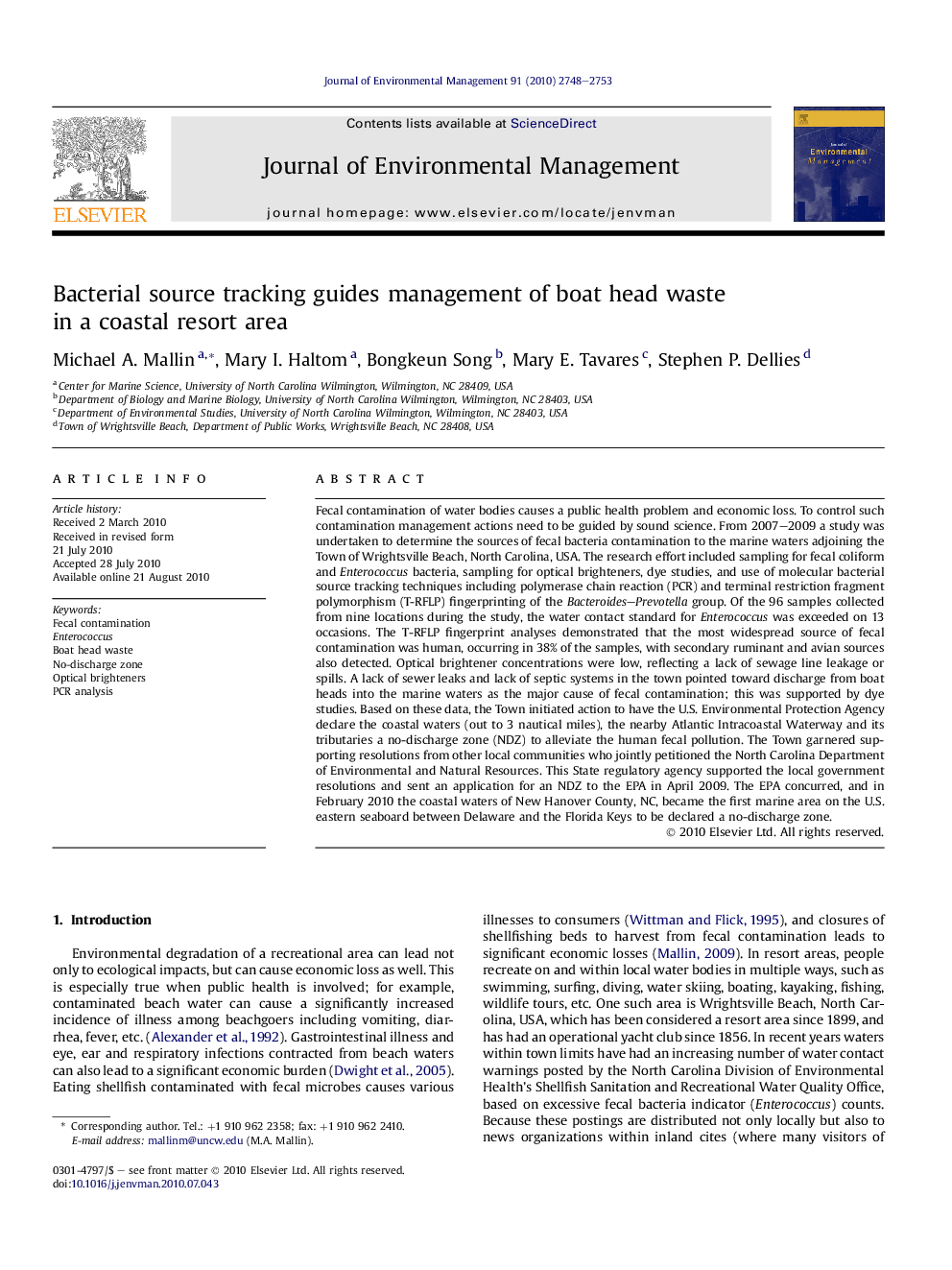| Article ID | Journal | Published Year | Pages | File Type |
|---|---|---|---|---|
| 1057584 | Journal of Environmental Management | 2010 | 6 Pages |
Fecal contamination of water bodies causes a public health problem and economic loss. To control such contamination management actions need to be guided by sound science. From 2007–2009 a study was undertaken to determine the sources of fecal bacteria contamination to the marine waters adjoining the Town of Wrightsville Beach, North Carolina, USA. The research effort included sampling for fecal coliform and Enterococcus bacteria, sampling for optical brighteners, dye studies, and use of molecular bacterial source tracking techniques including polymerase chain reaction (PCR) and terminal restriction fragment polymorphism (T-RFLP) fingerprinting of the Bacteroides–Prevotella group. Of the 96 samples collected from nine locations during the study, the water contact standard for Enterococcus was exceeded on 13 occasions. The T-RFLP fingerprint analyses demonstrated that the most widespread source of fecal contamination was human, occurring in 38% of the samples, with secondary ruminant and avian sources also detected. Optical brightener concentrations were low, reflecting a lack of sewage line leakage or spills. A lack of sewer leaks and lack of septic systems in the town pointed toward discharge from boat heads into the marine waters as the major cause of fecal contamination; this was supported by dye studies. Based on these data, the Town initiated action to have the U.S. Environmental Protection Agency declare the coastal waters (out to 3 nautical miles), the nearby Atlantic Intracoastal Waterway and its tributaries a no-discharge zone (NDZ) to alleviate the human fecal pollution. The Town garnered supporting resolutions from other local communities who jointly petitioned the North Carolina Department of Environmental and Natural Resources. This State regulatory agency supported the local government resolutions and sent an application for an NDZ to the EPA in April 2009. The EPA concurred, and in February 2010 the coastal waters of New Hanover County, NC, became the first marine area on the U.S. eastern seaboard between Delaware and the Florida Keys to be declared a no-discharge zone.
